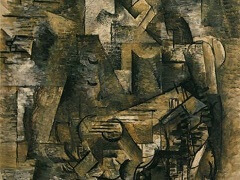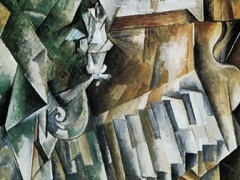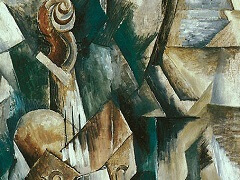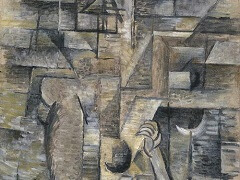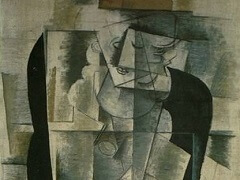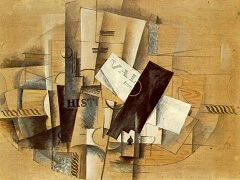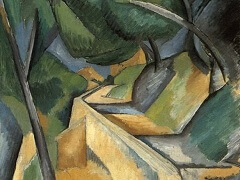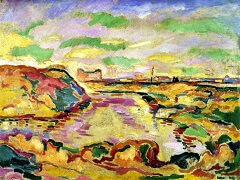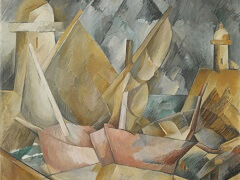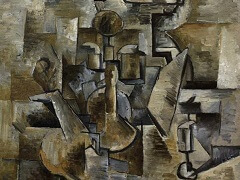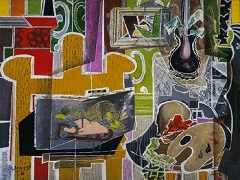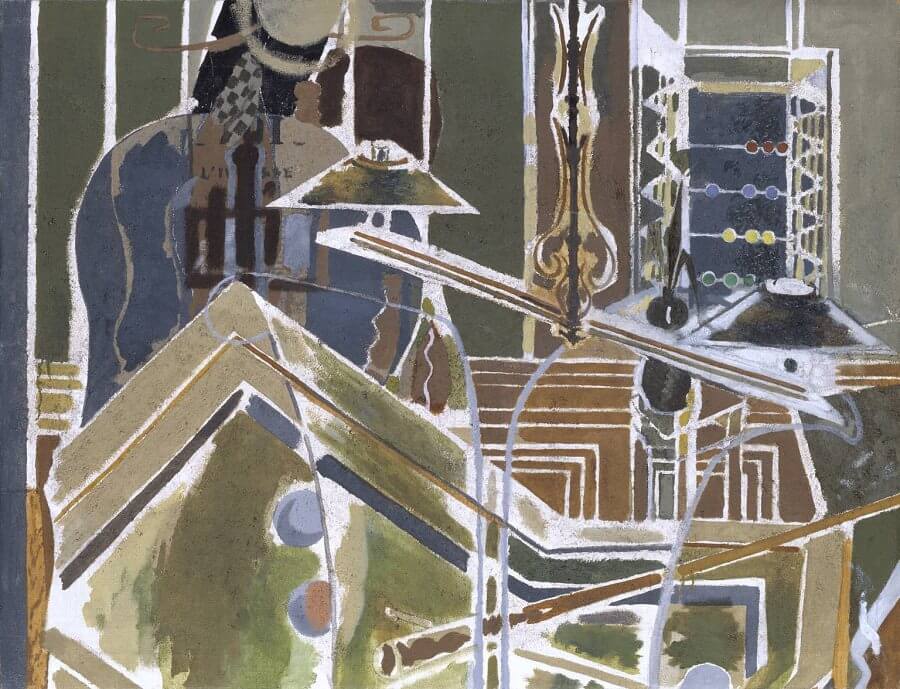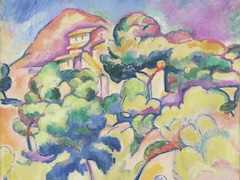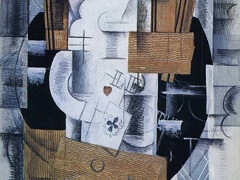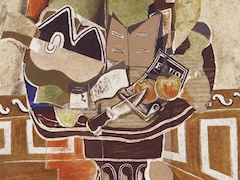Mandora 1909-10, by Georges Braque
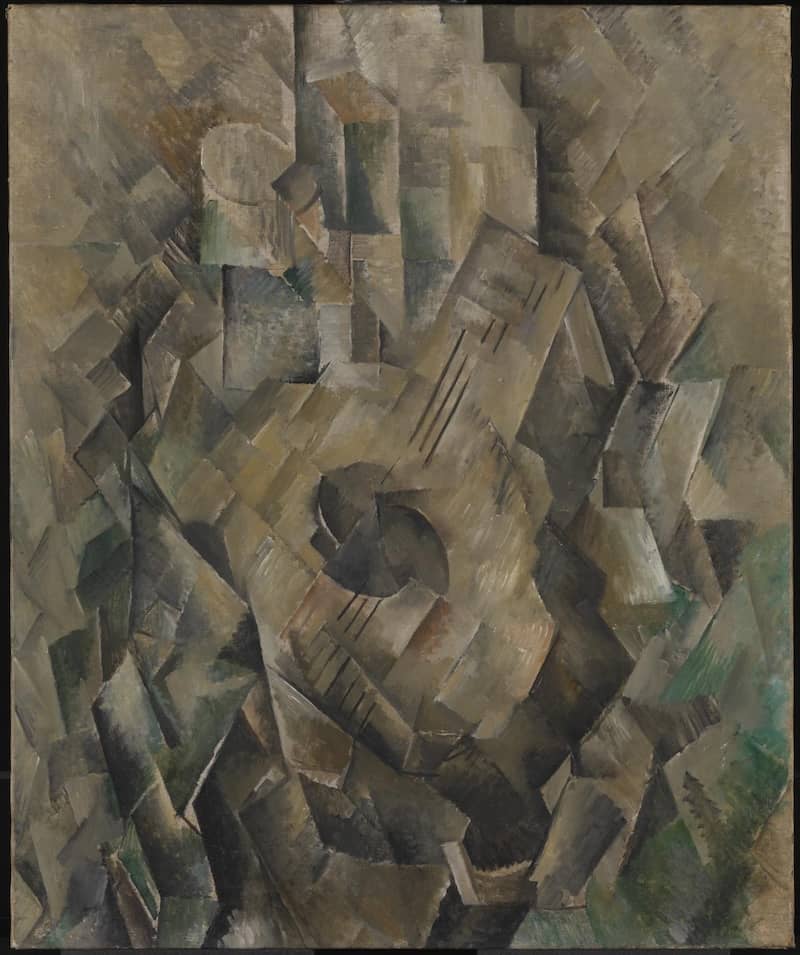
Georges Braque's interest in collecting musical instruments is reflected in this painting of a small lute called a mandora. Its fragmented style suggests a sense of rhythm and acoustic reverberation that matches the musical subject. Braque explained that he liked to include instruments in his cubist works, 'in the first place because I was surrounded by them, and secondly because their plasticity, their volumes, related to my particular concept of still life'.
Around 1909-09, the inspiration of Paul Cezanne's geometrized compositions led Georges Braque to simplified faceted forms, flattened spatial planes, and muted colors. Speaking of his methods at this period, Braque explained to Dora Vallier:
It was not a case of starting from the object: one went towards the object. ... When fragmented objects appeared in my painting about 1909, it was a way of getting as close to the objects as painting allowed. Fragmentation allowed me to establish space and movement in space and I was only able to introduce objects after space had been created. ... At this period I painted many musical instruments, in the first place because I was surrounded by them and secondly because their plasticity, their volumes related to my particular conception of still life."

